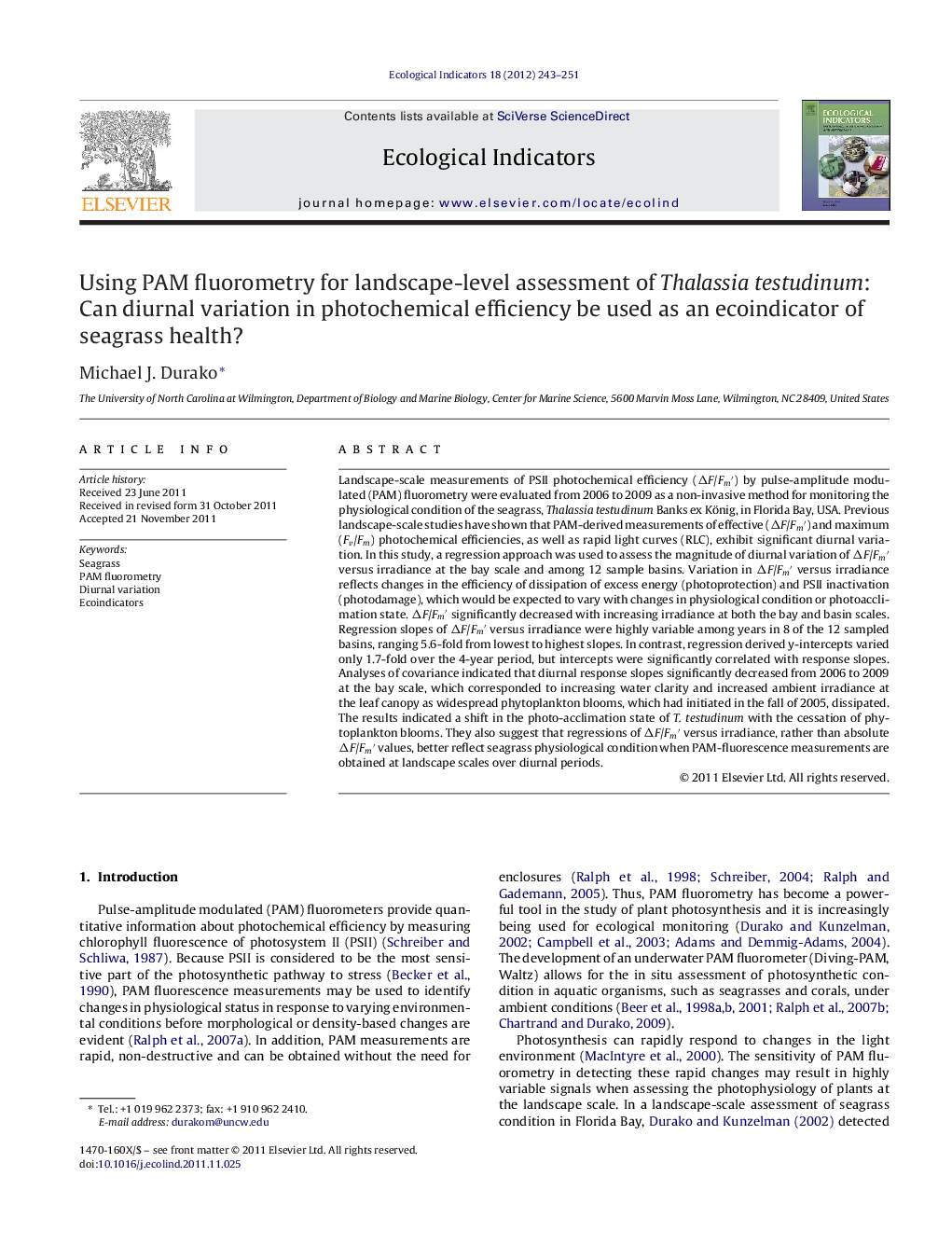| کد مقاله | کد نشریه | سال انتشار | مقاله انگلیسی | نسخه تمام متن |
|---|---|---|---|---|
| 4373781 | 1617182 | 2012 | 9 صفحه PDF | دانلود رایگان |

Landscape-scale measurements of PSII photochemical efficiency (ΔF/Fm′) by pulse-amplitude modulated (PAM) fluorometry were evaluated from 2006 to 2009 as a non-invasive method for monitoring the physiological condition of the seagrass, Thalassia testudinum Banks ex König, in Florida Bay, USA. Previous landscape-scale studies have shown that PAM-derived measurements of effective (ΔF/Fm′) and maximum (Fv/Fm) photochemical efficiencies, as well as rapid light curves (RLC), exhibit significant diurnal variation. In this study, a regression approach was used to assess the magnitude of diurnal variation of ΔF/Fm′ versus irradiance at the bay scale and among 12 sample basins. Variation in ΔF/Fm′ versus irradiance reflects changes in the efficiency of dissipation of excess energy (photoprotection) and PSII inactivation (photodamage), which would be expected to vary with changes in physiological condition or photoacclimation state. ΔF/Fm′ significantly decreased with increasing irradiance at both the bay and basin scales. Regression slopes of ΔF/Fm′ versus irradiance were highly variable among years in 8 of the 12 sampled basins, ranging 5.6-fold from lowest to highest slopes. In contrast, regression derived y-intercepts varied only 1.7-fold over the 4-year period, but intercepts were significantly correlated with response slopes. Analyses of covariance indicated that diurnal response slopes significantly decreased from 2006 to 2009 at the bay scale, which corresponded to increasing water clarity and increased ambient irradiance at the leaf canopy as widespread phytoplankton blooms, which had initiated in the fall of 2005, dissipated. The results indicated a shift in the photo-acclimation state of T. testudinum with the cessation of phytoplankton blooms. They also suggest that regressions of ΔF/Fm′ versus irradiance, rather than absolute ΔF/Fm′ values, better reflect seagrass physiological condition when PAM-fluorescence measurements are obtained at landscape scales over diurnal periods.
▸ Diurnal variation in effective photochemical efficiency (ΔF/Fm′) versus PAR for Thalassia testudinum in Florida Bay was examined. ▸ Regression slopes of ΔF/Fm′ versus PAR significantly decreased from 2006 to 2009 as water clarity increased. ▸ Changes in regression slopes and intercepts were correlated and may reflect sun versus shade acclimation in T. testudinum.
Journal: Ecological Indicators - Volume 18, July 2012, Pages 243–251